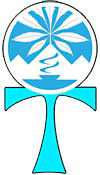philosophy
Many courts claim that philosophy is different than religion. This is a specifically Roman Catholic belief in origin (to allow the Roman Catholic Church to use philosophy, especially Aristotle, without using the religions, especially Hellenism and the Kemetic religion). The Kemetic (ancient Egyptian) religion invented philosophy as an integral part of the religion. Many other world religions include philosophy.
legal standards
“(2) is part of a religion that is comprehensive in nature and consists of a belief system as opposed to an isolated teaching;” —Malnak v. Yogi
“4. Comprehensiveness of Beliefs: Another hallmark of “religious” ideas is that they are comprehensive. More often than not, such beliefs provide a telos, an overreaching array of beliefs that coalesce to provide the believer with answers to many, if not most, of the problems and concerns that confront humans. In other words, religious beliefs generally are not confined to one question or a single teaching. Africa, 662 F.2d at 1035.” —United States of America v David Meyers
“a recognized creed and form of worship,” —IRS definition of a church
“a formal code of doctrine and discipline,” —IRS definition of a church
religious freedom reply to IRS standards
The fourth requirement, that a church have a formal code of doctrine and discipline, may contradict a fundamental tenet of an organization that it have “no traditional doctrine.” For example, the Quakers do not have a “written or spoken formal creed . . . . The Society never requires of its members the acceptance of any formula or belief.” The Plymouth Brethren “oppose man made creeds as being human additions to the Word of God. Many other evangelicals share this view.” — “Defining Religion in American Law” by Bruce J. Casino, International Coalition for Religious Freedom
Kemetic or ancient Egyptian religion
The Greeks (including famous Greek philosophers) believed that the origin of Greek philosophy was earlier Kemetic (ancient Egyptian) philosophy.
An example from the Shabaka stela:
There comes into being in the heart; there comes into being by the tongue as the image of Atum! Ptah is the very great, who gives life to all the neteru and their kas. It is all in this heart and by this tongue.
His [Ptah’s] Puat [Ennead] is before him as heart, authoritative utterance, teeth, semen, lips, and hands of Atum. This Puat [Ennead] of Atum came into being through his semen and through his fingers. Surely, this Puat [Ennead of Ptah] is the teeth and the lips in the mouth, proclaiming the name of all things, from which Shu and Tefwt came forth as him, and which gave birth to the Puat [Ennead of Ptah]. The sight of the eyes, the hearing of the ears, and the breathing of air through the nose, they transmit to the heart, which brings forth every decision. Indeed, the tongue thence repeats what is in front of the heart. Thus was given birth to all the neteru. His [Ptah’s] Puat [Ennead] was completed. Lo, every word of the Ntr came into being through the thoughts in the heart and the command by the tongue. Thus all the faculties were made and all the qualities determined, they that make all foods and all provisions, through this word. [Life] to him who does what is loved, [death] to him who does what is hated. Thus life is given to the peaceful and death is given to the criminal. Thus all labor, all crafts, the action of the arms, the motion of the legs, the movements of all the limbs, acording to this command which is devised by the heart and comes orth by the tongue and creates the performance of everything.
Ronald L. Bonewitz, PhD, geologist, wrote in his 1998 book hieroglyphics “Egyptian [the language] comes from a system of thought somewhat closer [than Mayan hierglyphs] to modern thought; indeed, it may be argued that modern thought is a direct [descendant] of Egyptian thought.”




